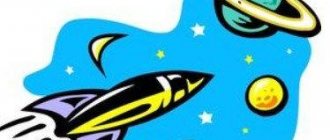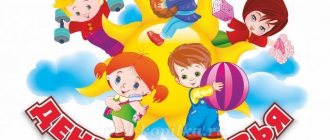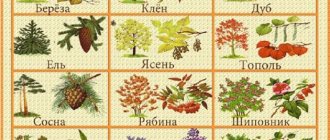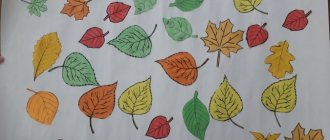THEME WEEK “MOSCOW IS THE CAPITAL OF RUSSIA” senior group. Social and communicative development
Transcript
1 THEMATIC WEEK “MOSCOW IS THE CAPITAL OF RUSSIA” Social and communicative development THE THEMED WEEK “MOSCOW IS THE CAPITAL OF RUSSIA” senior group Appendix to the calendar plan in the senior group, October, week 4 Website - kalendarnyiplan.ru A story about Moscow for children Moscow is the capital of a huge country called Russia. The first chronicle mention of Moscow (the village of Moskova) dates back to 1147. At that time, on the territory of present-day Moscow, on the way from the Moscow River to the Klyazma, along the Neglinka and Yauza rivers, a number of villages belonging to the boyar Kuchka were scattered. According to the chronicle, in 1156, Prince Yuri Dolgoruky surrounded a small settlement located on a high cape at the confluence of the Moskva River and the Neglinka River with a strong wooden wall (“city”), surrounded it with a moat and nicknamed it “Moscow City”. It was a small town, occupying only the extreme southwestern corner of the present Kremlin. Around the “city” there was a rustling forest, which the name Borovitsky Gate of the Kremlin reminds of. Convenient geographical location of Moscow, lying at the intersection of trade routes that led to Tver (along Tverskaya), to Vladimir and Yaroslavl (along Sretenka), to the east (along Solyanka), south to Orda (along Ordynka), to Smolensk (via Chertolye ) contributed to its further growth. In 1328, Prince Ivan Kalita made Moscow the capital. His merit, first of all, was that the metropolitan see was transferred to Moscow from Vladimir. This immediately made Moscow the spiritual capital of Rus'. Several centuries have passed. Today's Moscow is a city of world significance, the largest historical, economic, transport and cultural center. Moscow is a giant city, with a rich historical past, with its own unique, centuries-old
2 past, with its own unique, centuries-old traditions, unique aura. The Belgian poet Emile Verhaeren wrote: “All of Moscow seems to me like a huge museum in the open air.” A tour of Moscow, as a rule, begins with Red Square and the Kremlin, the history of which is closely connected with the history of Moscow. Red Square is the central square of the capital, and the Kremlin, from which the land of Moscow began, is the main socio-political, historical and artistic complex of the city. On Red Square there is one of the most remarkable creations of ancient Russian architecture, the Intercession Cathedral, or St. Basil's Cathedral. The cathedral was built during the reign of Tsar Ivan the Terrible. Opposite the Execution Cathedral, decorated under Catherine II by the architect Kazakov. From here the royal decrees were announced to the people. Here, next to the Intercession Cathedral, there is a monument to Minin and Pozharsky, made according to the design of the artist Martos and cast by the artist Ekimov. Moscow is rich in beauty, sights, and places that deserve special attention. Old and new, big and small, modest and luxurious live in it side by side. The city is growing and changing. And only history cannot be changed. She is eternal. Exercise “What do we do when...” The participants of the game are divided into three groups: “mothers”, “fathers”, “children”. The presenter asks: “What do dad and children do when mom is not at home?” “Children” and “dads” depict what they are doing: reading a newspaper or a book, playing, watching TV, sleeping, cleaning the house, etc. “Moms” choose the most wonderful dad, the most caring son, the best housewife-daughter. The following situations are played out: what children do when mom and dad are not at home; what mom and children do when dad is at work; what dad and children do when mom is tired; what mom and dad do when their son has a broken knee, when their daughter has a holiday in kindergarten, etc. The game helps expand the teacher’s ideas about children’s families: their traditions and routines, about building intrafamily relationships, about the degree of mutual care among family members. Children highlight kind, caring and beautiful deeds performed for the sake of their loved ones. Speech development Irina Pivovarova. We went to the theater We went to the theater. We walked in pairs, and there were puddles, puddles, puddles everywhere, because it had just rained. And we jumped over puddles. My new blue tights and my new red shoes were covered in black splashes. And Lyuska’s tights and shoes too! And Sima Korostyleva ran and jumped into the very middle of the puddle, and the entire hem of her new green dress turned black! Sima began to wring it out, and the dress became like a washcloth, all wrinkled and wet at the bottom. And Valka decided to help her and began to smooth out the dress with her hands, and this caused some gray stripes to form on Sima’s dress, and Sima was very upset. But we told her: Don't pay attention! and moved on.
3 And Sima stopped paying attention and began jumping over puddles again. And our entire unit jumped: Pavlik, Valka, and Burakov. But, of course, Kolya Lykov jumped the best. His trousers were wet to the knees, his shoes were completely wet, but he did not lose heart. And it was funny to be depressed over such trifles! The whole street was wet and glistening from the sun. Steam rose from the puddles. Sparrows chattered on the branches. Beautiful houses, all like new, just painted yellow, light green and pink, looked at us from their clean spring windows. They joyfully showed us their black carved balconies, their white stucco decorations, their columns between the windows, their multi-colored tiles under the roofs, their cheerful dancing women in long clothes sculpted above the entrances and serious sad men with small horns in their curly hair. All the houses were so beautiful! So old! So different from each other! And this was the Center. Center of Moscow. Garden Street. And we went to the puppet theater. We walked from the metro itself! On foot! And jumped over puddles! How I love Moscow! I'm even scared how much I love her! I even want to cry, how much I love her! My stomach clench when I look at these ancient houses, and how people are running and running somewhere, and how cars are rushing, and how the sun sparkles in the windows of tall houses, and cars screech, and sparrows scream in the trees. And now behind all the puddles, eight large, ten medium and twenty-two small, and we are at the theater. And then we were in the theater and watched the performance. An interesting performance. We watched for two hours, we were even tired. And on the way back, everyone was in a hurry to go home and didn’t want to walk, no matter how much I asked, so we got on the bus and rode in the bus all the way to the metro. Moscow. Fedor Glinka. A wonderful city, an ancient city, You have included in your ends And towns and villages, And chambers and palaces! Belted with a ribbon of arable land, You are all colorful in the gardens: How many temples, how many towers On your seven hills!.. On your ancient churches Trees grow; The eye cannot grasp the long streets. This is Mother Moscow! Who, the strong man, will take the Kremlin-hero Hill in his arms? Who will knock off Ivan the Bell-Ringer's golden hat? Who will raise the Tsar Bell? Who will turn the Tsar Cannon? Who, the proud man, won’t take off his hat at the gates of the saints in the Kremlin?! Flourish with eternal glory, City of temples and chambers! The city of the middle, the city of the heart, the city of Root Russia!
4 Artistic and aesthetic development A story about the history of the construction of the Kremlin. From the very beginning, back in 1156, Yuri Dolgoruky founded a fortress and built a rampart with wooden walls. The fortress was first built entirely of wood: Fence, Towers, Bell Towers, Houses. Only now he built the city not from scratch, but where an ancient settlement with a moat and a fence had already existed before him, where they hunted, fished on the river, and people lived. He captured the settlement with his squad, founded a new wooden city, giving it a name after the river that flowed nearby. Since wood easily catches fire, the buildings have suffered several fires over the years, each time being rebuilt from new logs. For many years, internecine wars between the Russian princes were fought, the invasion of Batu Khan, robberies and fires caused severe damage to the wooden city buildings. The grandson of Alexander Nevsky, Ivan Kalita, set up a residence in the Moscow Kremlin in 1331, making the city itself one of the largest and strongest in Rus'. During his reign, a princely treasury began to take shape, the main attraction of which was the famous Monomakh hat. Only during the time of Dmitry Donskoy, in 1368, Moscow became white-stone, but this did not last long. Over the years, the white stone collapsed, grew old, and began to look unsightly, so the townspeople began to use red brick in construction. It was from such bricks that the modern Kremlin walls with sharp battlements and watchtowers were built over the years. Moscow became the capital of a large state; renovation and reconstruction of towers and squares was required. During these years, the main temples and chambers were built, which have survived to this day. During the times of Peter the Great and Catherine the Second, the Arsenal, the Senate, and new galleries of the Armory Chamber were erected. There were fires and destruction again, followed by restorations. Over the centuries, renovations and construction of new buildings continued. Until 1953, the entrance to the Kremlin territory was closed to tourists. Kremlin towers 20 towers have survived to this day, each with its own history and name. The Taynitskaya Tower, which has its own secrets, is considered the oldest. There was an underground passage leading to the river and a secret well. The highest is called the Trinity Tower, whose height is about 80 meters. The Kutafya watchtower is considered the smallest, with a height of only about 14 meters. Thematic musical and didactic game “Who came to the zoo?” Goal: to teach preschoolers to listen carefully to music, imagine a musical image, its mood, convey its features in homogeneous and synthetic musical compositions and improvisations. Equipment: cards or medallions with images of zoo residents or their flat figures, toys: lion, wolf, swan, elephant, turtle, goldfish.
5 Sketch “Fox” Educator: In what fairy tales is the fox found? Children: “Fox with a rolling pin”, “Snow Maiden and the Fox”, “Fox and Goat”... Educator: Let's remember, what kind of fox? Children: She is cunning, affectionate, quiet, kind, nimble, fashionable. Educator: Let's think: does the fox consider itself beautiful? Why do you think so? Children's answers. Educator: Imagine that your mother bought you a new dress (suit, outfit), and you are standing in front of the mirror. You look at your reflection, you really like it. You really like the sleeves and collar. You gently touch the puffy sleeves with your fingers, afraid to wrinkle them or get them dirty. And this outfit suits you so well. Show off in front of the mirror. Children “show off in front of the mirror.” Educator: The fox also loves to show off. She loves her fur coat and is afraid of getting it dirty or wrinkled. How should she walk? Children: The fox must walk carefully and quietly. Educator: To show everyone what a beautiful fur coat she has? Children demonstrate. Educator: Well done, everyone is doing well! And now everyone will wish for a fox from some fairy tale and remember the situation in which she goes somewhere, show us her heroine, and we will guess the image. The person who wishes shows his fox, and the rest of the children guess her image. Game “Body” Didactic task: Develop auditory attention, activate vocabulary, thinking; develop intelligence. Game rules. You can “put” only those words that end in -ok in the box; The one who says the word passes the box to another child. Game actions. Imitation of movement, as if an object is being lowered into a box; whoever makes a mistake by naming an object with a different ending pays a forfeit, which is then won back. Progress of the game. The players sit at the table. The teacher puts the basket on the table, then asks: “Do you see, children, this little box?” Do you know what you can put in the box? In this box you will put everything that can be called a word ending in -ok. For example: lock, scarf, stocking, sock, lace, leaf, lump, bun, hook. Fungus, boxes, etc. Everyone puts into the box what he wants, according to the rule, and passes it on to his neighbor, who will also put some of the things whose name ends in -ok and passes the box on. Cognitive development Determining the temperature of objects “Wonderful bag” Material: Objects made of metal, wood, bag Methodological techniques The teacher invites the children to take objects out of the bag one at a time. “Cold objects are put together and you find out what they are made of. (made of iron).
6 Similarly, children take wooden objects out of the bag. The adult offers to hold the objects in their hands. What have they become? If objects are kept outside for a long time, what material will the objects become colder? Conclusions. TRIZ game “Choose Me” Purpose: To teach to analyze the relationships between concepts. To develop in children the ability to determine relationships between concepts or connections between phenomena and concepts. Children are offered three cards, the first two images on them are in a certain connection. The same relationships exist between the third and one of the proposed three (four) images. You need to find the fourth image. For example: 1. Steam locomotive - carriages = horse -? (Train, stable, cart). 2. Song - singer = picture -? (Patient, artist, brush). 3. Knife - steel = table -? (Fork, wood, tablecloth, chair). 4. Forest - trees = library -? (City, librarian, theater, books). 5. Run - stand = laugh -? (Crawl, call, cry). 6. Morning - night = winter -? (Autumn, sleigh, day, frost). 7. Wolf - mouth = bird -? (Air, egg, beak, rooster). 8. School - student = hospital -? (Doctor, patient, teacher, home). Game “Whoever walks correctly will find the toy” The teacher calls the child and suggests: “Take 6 steps forward, turn left, take 4 steps and find the toy.” One child can be assigned to name a toy and describe its shape, all children can be tasked with naming an object of the same shape (the task is divided into parts), 5-6 children are called. Game “Living Numbers” Purpose: to practice counting (forward and backward) within 10. Material. Cards with circles drawn on them from 1 to 10. Contents. Children receive cards. The driver is selected. Children walk around the room. At the driver’s signal: “Numbers! Stand in order!” - they line up, calling out their number. (One, two, three, etc.). Children exchange cards. And the game continues. Game option. “Numbers” are built in reverse order from 10 to 1, recalculated in order. Exercise “Word Game” I will read you the words, and you think which of them are suitable for an ant (bumblebee, bee, cockroach). Vocabulary: anthill, green, flutters, honey, evasive, hardworking, red back, apiary, annoying, beehive, shaggy, ringing, river. Chirping, cobweb, flat, aphids, pest, “flying flower”, honeycomb, buzzing, needles, “jumping champion”, motley-winged, big eyes, red-whiskered, striped, swarm, nectar, pollen, caterpillar, protective coloring, repellent coloring. Game option: what words are suitable for a vegetable (fruit, etc.)





